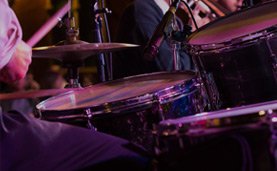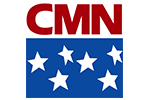10 70s Dance Trends That Were Painfully Awkward

via Roula Mpakali / YouTube
The 1970s were a time of bold self-expression and unforgettable style, especially on the dance floor. Clubs and discos were packed with people trying out the latest moves, some of which haven’t aged too well. Here’s a look back at ten dance trends from the 70s that, in hindsight, were pretty awkward.
1. The Bump
The Bump was simple: two people would bump their hips together to the beat. It started as harmless fun, but the constant hip-bumping could get uncomfortable. Many dancers added extra moves, making it a more intense version of what was meant to be a playful, laid-back dance.
The dance quickly spread to nightclubs, where it was a popular choice for crowds who enjoyed partner dances. But as new styles emerged, The Bump’s repetitive motion faded, and the trend eventually felt more silly than stylish.

2. The Funky Chicken
With flapping arms and exaggerated movements, the Funky Chicken imitated a chicken strut on the dance floor. Dancers would flap their elbows, bob their heads, and sometimes kick their legs in odd ways. Though it drew laughs and got people moving, it often looked more ridiculous than “funky.”
Despite the goofy nature of the dance, it fit well with the playful vibe of many 70s parties. But in the end, flapping like a chicken didn’t have much staying power and became a dance people would rather laugh about than repeat.

3. The Robot
Inspired by the rise of electronic music, The Robot was all about stiff, mechanical movements. Dancers would move in jerky, robotic motions, trying to imitate a machine. While it was fun to watch, actually doing The Robot required good timing; otherwise, it could come off looking awkward and uncoordinated.
Despite its complexity, the dance became a defining 70s trend, especially with disco fans. But for those who couldn’t master the stiff moves, The Robot often ended up as more of an awkward attempt than a smooth performance.

4. The YMCA
Made famous by the Village People, the YMCA dance had everyone forming the letters “Y-M-C-A” with their arms. The upbeat anthem became a party favorite, and people embraced the song’s dance moves. While it was fun, spelling out letters with your arms at a party often felt a bit silly.
It became a dance everyone knew, even those who didn’t dance much. The YMCA moves were awkwardly simple, but the energy of the song helped keep it alive at events and parties long after the 70s.

5. The Hustle
The Hustle was a fast-paced dance that mixed disco with Latin-inspired footwork. Dancers glided across the floor, spinning and moving in sync. However, learning The Hustle wasn’t easy. For many, it felt like a challenging mix of twists and turns that left them feeling more tangled than graceful.
Although it was incredibly popular, the dance’s complicated moves made it intimidating for beginners. People tried to mimic it on crowded floors, and the struggle often made The Hustle look clumsy rather than smooth.

6. The Disco Finger
The Disco Finger involved pointing one finger in the air while striking a pose. Think John Travolta in Saturday Night Fever. It became a symbol of disco culture, but over time, the pose lost its appeal. Pointing dramatically at the ceiling could look more forced than fun, especially in everyday settings.
The pose worked in movies and photos, but real-life attempts to recreate it felt awkward. The Disco Finger stayed popular through the disco era, but it didn’t translate well beyond the dance floor.

7. The Electric Slide
The Electric Slide was one of the earliest line dances, with simple steps that repeated as everyone moved together. While it got people dancing in sync, it could feel rigid and overly rehearsed. The Electric Slide’s repetitive steps could make it look a bit robotic, especially in large groups.
It was a go-to for many gatherings, and it became a way to include everyone, even non-dancers. But for those who preferred freestyle dancing, The Electric Slide could feel limiting and, over time, painfully predictable.

8. The Pogo
The Pogo was all about jumping in place while bouncing off the floor to the beat. Originating in punk scenes, it didn’t require rhythm or skill, just a willingness to jump up and down. As simple as it was, the Pogo could look chaotic and random, especially in a crowded club.
People enjoyed its carefree nature, and it became a favorite at concerts. However, with everyone jumping at once, it often looked more like a wild frenzy than a dance, leading to some awkward moments.

9. The Moonwalk
Long before Michael Jackson made it famous, an early version of the Moonwalk was attempted in the 70s. Dancers tried sliding backward in a smooth motion, imitating a glide. But without proper technique, many ended up with clumsy, jerky steps that looked more like dragging than sliding.
The Moonwalk became legendary later on, but for most 70s dancers, mastering the technique was difficult. The attempts often looked forced, making the dance a bit cringeworthy for those who couldn’t pull it off.

10. The Wave
The Wave involved moving arms and hands in a way that looked like a wave traveling through the body. While breakdancers eventually mastered it, early attempts in the 70s often fell short. Many dancers found it tricky to create a fluid motion, resulting in awkward, jerky moves.
For those who managed to make the motion smooth, it became a crowd-pleaser. But for the average dancer, The Wave often looked more like uncomfortable arm-flapping, adding to the list of awkward dance moments from the 70s.


















